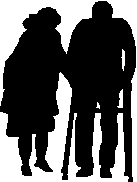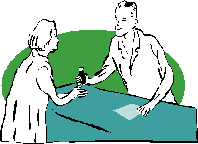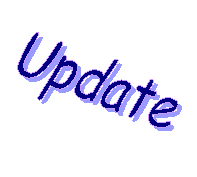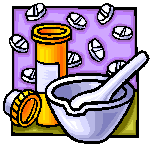DOH Medicaid Update September 2002 Vol. 17, No. 9
Office of Medicaid Management
DOH Medicaid Update
September 2002 Vol.17, No.9
State of New York
George E. Pataki, Governor
Department of Health
Antonia C. Novello, M.D., M.P.H., Dr. P.H.
Commissioner
Medicaid Update
is a monthly publication of the
New York State Department of Health,
Office of Medicaid Management,
14th Floor, Room 1466,
Corning Tower, Albany,
New York 12237
Table of Contents
Personal Assistance by Ambulette Staff
Tobacco Use in Women and Girls
Open Letter from Commissioner Novello
Free Diabetes Foot Screening Materials
Regional Asthma Coalitions in NYS
Mandatory Generic Program Date Changes
Comparison of Drug Costs
Are Your Patients Taking Their Medicine?
Laboratory Regulations Revision
Laboratory Billing for Molecular Diagnosis Procedures
Managed Care Benefit Package Amended
New Fee for DME Providers
Tape and Diskette Submissions
Prior Approval for Private Duty Nursing
Hospital Patient Discharge Status Codes

PORTABLE X-RAY PROVIDERS
DEMONSTRATION PROGRAM IS EXTENDED
Return to Table of Contents
Governor George Pataki has signed into law legislation extending the statutory authority of the Portable X-ray Demonstration Program. The demonstration will be in effect for services provided through June 30, 2003 and permits Medicaid payment to companies enrolled in the demonstration.
These companies provide portable x-ray services to residents of nursing homes and intermediate care facilities for the developmentally disabled when Medicare does not cover these services.
Medicare-certified portable x-ray companies that are not already participating in the demonstration program may contact the Department of Health at (518) 474-8161 for information about the enrollment process.
If you have questions about the extension of the Portable X-ray Demonstration Program, please contact Mary Horsman in the Medicaid Bureau of Policy Development and Agency Relations at (518) 473-4055.
AMBULETTE TRANSPORTATION STAFF
THERE ARE NO LIMITS TO THE PROVISION OF PERSONAL ASSISTANCE PROVIDED TO MEDICAID RECIPIENTS BY AMBULETTE STAFF
Return to Table of Contents

This article clarifies Medicaid policy as it relates to personal assistance provided to Medicaid recipients by ambulette staff. The Medicaid program does not limit the number of stairs or floors in a building that a provider must climb in order to provide personal assistance to a Medicaid recipient.
The ambulette service is required by Medicaid rules to provide personal assistance and door- to-door service. This means the staff must transport the recipient from his or her front door (including apartment door, room in nursing home, etc.), no matter where it is located, to the door of the medical practitioner from whom the recipient is receiving medical services.
Personal assistance is defined in Title 18, Section 505.10 of the New York State Codes Rules and Regulations as follows:
Personal assistance means the provision of physical assistance by a provider of ambulette services or the provider's employee to a MA recipient for the purpose of assuring safe access to and from the recipient's place of residence, ambulette vehicle and MA covered health service provider's place of business. Personal assistance is the rendering of physical assistance to the recipient in walking, climbing or descending stairs, ramps, curbs or other obstacles; opening or closing doors; accessing an ambulette vehicle; and the moving of wheelchairs or other items of medical equipment and the removal of obstacles as necessary to assure the safe movement of the recipient. In providing personal assistance, the provider or the provider's employee will physically assist the recipient which shall include touching, or, if the recipient prefers not to be touched, guiding the recipient in such close proximity that the provider of services will be able to prevent any potential injury due to a sudden loss of steadiness or balance. A recipient who can walk to and from a vehicle, his or her home, and a place of medical services without such assistance is deemed not to require personal assistance.
Questions about this article may be directed to Provider Resources Unit at (518) 474-9219.
TOBACCO USE
IN WOMEN AND GIRLS
Return to Table of Contents


In the United States, about 22 million adult women and at least 1.5 million adolescent girls currently smoke cigarettes. Among women, use of tobacco has been shown to increase the risk of cancer, heart and respiratory diseases, and reproductive disorders. More than 140,000 women die each year from smoking-related diseases-the most preventable cause of premature death in this country.
An open letter from Commissioner Novello to the 9.8 million Women and Girls of New York was recently published and is printed below. Please discuss the use of tobacco with your patients and feel free to make copies of this letter.
In addition, the Smoker's Quitline 1-866-NYQUITS (1-866-697-8487) is available free of charge to all New Yorkers, including Medicaid recipients. For more information on Medicaid's smoking cessation coverage and policy, contact the Pharmacy Policy and Operations staff at 518-486-3209.
An Open Letter to the Women & Girls of New York State
From Commissioner Novello
Return to Table of Contents

To the 9.8 Million Women and Girls of New York:
I am writing to you about a product that each year kills more New Yorkers than alcohol, cocaine, crack, heroin, murder, suicide, car accidents, fire, and AIDS combined. I am speaking of tobacco.
You already know that lung cancer, not breast cancer, is the leading cause of cancer deaths among women. And you know that as many as 30 percent of deaths from cardiovascular disease are a result of tobacco use, with women who smoke more than twice as likely as other women to have a heart attack.
Ladies, here are 14 reasons for not smoking - reasons that you may not have thought about before. They come from your Health Commissioner and your former Surgeon General. If you don't smoke or if you quit now, remember:
- You could add 14 years to your life span.
- You will protect your family and friends from the deadly effects of second-hand smoke.
- You will reduce your risk for infertility, ectopic pregnancy, spontaneous abortion, and having a stillborn child.
- You will reduce your risk of having a baby born underweight with possible learning disabilities.
- Your baby will be less likely to develop asthma, colds, ear infections and other respiratory problems, and will be at a lower risk of dying from Sudden Infant Death Syndrome (SIDS).
- Your children will be less likely to become smokers when they become teenagers.
- You will be less likely to have menstrual irregularities and early onset of menopause.
- You will have less facial wrinkling, whiter teeth, and fresher smelling breath.
- You will maintain greater bone density after menopause and be at less risk for hip fractures.
- You will be at less risk for developing cataracts and age-related macular degeneration.
- You will be less likely to become a financial burden to family members who otherwise may have to spend thousands of dollars on your care and treatment for smoking-related health problems.
- You will be able to save close to $2,000 per year on the cost of cigarettes that could be used for college tuition, vacations and other family expenses.
- You will be able to control the average weight gain of 5 pounds that occurs after quitting through diet and exercise.
- Your husband, your children, your parents, and your friends will thank you-because they will have you around much longer!
Ladies, smoking is an addiction, and addiction is a disease. Women who smoke need help quitting. So if you know a woman who smokes, encourage her to quit. If you are a smoker, we are here to help. Just call the New York State Smokers' Quitline at: 1-866-NYQUITS (1-866-697-8487) and take the first step toward a better life.
Sincerely,
Antonia C. Novello, M.D., M.P.H., Dr.P.H.
New York State Commissioner of Health

Foot ulcers and amputations are a major cause of morbidity and disability, as well as emotional and physical costs for people with diabetes. Diabetes is the leading cause of lower extremity amputations in the United States. Each year approximately 100,000 amputations are performed on people with diabetes. After an amputation, the chance of another amputation within three-five years is as high as 50 percent. The five-year mortality rate after amputation ranges from 39 to 68 percent.
The U.S. Department of Health and Human Service, Health Research and Services Administrations (HRSA) has developed LEAP, Lower Extremity Amputation Prevention program. The LEAP program is designed to educate primary care providers and their patients about the importance of frequent and through foot inspections. A number of materials are available free of charge for both providers and patients.
The LEAP materials include:
- Performing Foot Exams to Prevent Lower Extremity Amputations in Patients with Diabetes, a video for primary care providers which demonstrates how to use the LEAP Filament in screening patients at risk for diabetes, or who have diabetes, for loss of protective sensation of the foot. The video also describes steps to help prevent and detect loss of protective sensation in the foot, and emphasizes the importance of ongoing self-assessment by the patient.

-
LEAP Foot Test Instruction, a booklet for patients available in English, Spanish, and in large print, instructs patients on how to do a Diabetes Foot Screen, and how to record their findings to report to their provider.
- LEAP Filaments are available in a singular pack or in packs of 50.
To order LEAP Materials:
| Publications Code | Title |
|---|---|
| PC495 | Foot Assessment of the Adult Diabetic Patient (video) |
| PC548 | LEAP Filament |
| PC561 | LEAP Filaments (50 pack) |
| PC544 | LEAP Foot Test Instructions |
| PC560 | LEAP Foot Test Instructions (large print) |
| PC00053 | LEAP Foot Test Instructions (Spanish) |
| Write: | Or Call: |
|---|---|
| HRSA Information Center 8280 Greensboro Drive, Suite 300 McLean, VA 22102 |
Phone: 1-888-Ask HRSA TTY: 1-877-4TY-HRSA Fax: 703-821-2098 E-mail:ask@hrsa.gov Web: www.hrsa.gov/orderpublications/index.html Se Habla Espanol |
The Medicaid Program reimburses for medically necessary care, services and supplies for the diagnosis and treatment of diabetes. For information regarding Medicaid coverage of services related to diabetes, contact the Bureau of Program Guidance at (518) 474-9219, or go to http://www.health.ny.gov/health_care/medicaid/program/2000/oct2000.htm.


Regional Asthma Coalitions in New York State
Return to Table of Contents
In June 2000 the New York State Department of Health awarded seven coalitions funding to fight childhood asthma across the State. These asthma coalitions are made up of leaders of community organizations and volunteers who are combining their efforts to improve the quality of life of children and families with asthma. Each coalition provides asthma education, to improve care coordination and to develop data systems necessary to track disease and measure program effectiveness. The major objectives of the asthma coalitions are to decrease asthma-related emergency visits and school days lost from asthma-related illness.
Specific coalition activities to accomplish the objectives are:
- Asthma education and training for schools through the American Lung Association "Open Airways Program".
- Asthma education for families, communities, schools and daycare centers.
- Asthma education for health care professionals.
- Asthma care coordination for high-risk children.
- Data systems development.
| Name | Contact Information | Counties Served |
|---|---|---|
| Erie County Dept. of Health Western NY Public Health Coalition | Phone: (716) 691-5864 Fax: (716) 691-5012 E-mail: Iness@lawny.org |
Allegany, Cattaraugus, Chautauqua, Erie, Genesee, Niagara, Orleans, Wyoming |
| Finger Lakes Asthma Coalition | Phone: (716) 442-8189 Fax: (716) 442-9882 E-mail: alajl@rochester.rr.com http://www.rcanasthma.net |
Chemung, Livingston, Monroe, Ontario, Schuyler, Seneca, Steuben, Wayne, Yates |
| Central New York Asthma Coalition | Phone: (315) 422-6142 Fax: (315) 422-9710 E-mail: masmith@aloofcny.org |
Cortland, Herkimer, Jefferson, Lewis, Madison, Oswego, Oneida, Onondaga, St. Lawrence, Tompkins |
| Greater Capital District Asthma Coalition | Phone: (518) 459-4197 Fax: (518) 489-5864 E-mail: jcolon@alaneny.org |
Albany, Columbia, Fulton, Hamilton, Greene, Montgomery, Schnectady, Schoharie, Rensselaer |
| Hudson Valley Asthma Coalition | Phone: (914) 949-2150 Fax: (914) 949-4765 E-mail: jgallagher@alahv.org |
Dutchess, Orange, Putnam, Rockland, Sullivan, Ulster, Westchester |
| Nassau Suffolk Asthma Coalition | Phone: (631) 231-5864 Fax: (631) 231-5118 E-mail: alittle@alans.org |
Nassau, Suffolk |
| St. John Riverside Hospital - Yonkers | Phone: (914) 964-4673 Fax: (914) 964-4718 E-mail: jbyrne@riversidehealth.org |
Yonkers |
| New York City Childhood Asthma Initiative | Asthma Action Line 1-877-ASTHMA-0 1-877-278-4620 http://www.nyc.gov/html/asthma.html |
New York City |
The NYS Medicaid Program reimburses for medically necessary care, services, and supplies for the diagnosis and treatment of asthma. For more information, please contact the Bureau of Program Guidance at (518) 474-9219. For more information on asthma, please go the NYS Department of Health website, http://www.health.state.ny.us/diseases/asthma/.


Mandatory Generic Program
Implementation Update
Return to Table of Contents

The start date of the new Medicaid Mandatory Generic requirements will be November 17, 2002. In order to avoid having providers make two sets of system changes, this program will be implemented at the same time as the new eMedNY Point of Sale (POS) system.
As of November 17, 2002, all new prescriptions for brand-name drugs, where an A-rated generic equivalent is available, will be subject to prior authorization. Refills on prescriptions, which were already written and dispensed prior to November 17th, will not require prior authorization. When the current prescription expires, however, a prior authorization will be required for that patient to continue to receive the brand name drug.
The Commissioner of Health has exempted specific brand-name drugs from prior authorization. The following brand-name drugs, which have a generic available, may be prescribed without prior authorization:
Coumadin® Gengraf® Sandimmune®
Clozaril® Lanoxin® Tegretol®
Dilantin® Neoral® Zarontin®
These exemptions are not meant to discourage generic prescribing. These drugs have been exempted from new prior authorization requirements based on specific characteristics of the drug and/or disease state generally treated. Their exemption should not be considered an opinion on the bioequivalency of the generic versions.
For more information on the Mandatory Generic Program visit the following website:
Additional information on this program, with instructions on how to use the prior authorization system, will be provided in a special issue of the Medicaid Update to be released in Mid-September. If you would like more information, please e-mail your questions to ppno@health.state.ny.us, or contact the Pharmacy Policy and Operations staff at (518) 486-3209.
Comparison of Costs
Brand vs. Generic
Diuretics & Beta Blockers
Return to Table of Contents

According to the National Institute for Health Care Management, from 2000 to 2005, drugs with combined annual sales of approximately $20 billion are scheduled to come off patent. The use of generic drugs has a potential to play an important part in containing drug costs.
Diuretics and beta-blockers have proven to be very effective in the treatment of hypertension. It is important to assure that patients with hypertension are provided the most clinically appropriate and cost effective therapy. The cost of several common diuretics and beta-blockers to the Medicaid program is outlined below.
| Estimated Medicaid Cost/Month (as of 6/12/02) |
|||
|---|---|---|---|
| Drug | Brand | Generic | Savings |
| Bumex, 1mg qd (bumetanide) |
$13.98 | $5.63 | 59.7% |
| Lasix, 40mg qd (furosemide) |
$7.98 | $1.79 | 77.6% |
| Lopressor, 50mg bid (metoprolol) |
$43.44 | $4.22 | 90.3% |
| Lozol, 2.5mg qd (indapamide) |
$33.12 | $3.38 | 89.3% |
| Maxzide, 75/50mg qd (triamterene/hctz) |
$30.80 | $1.46 | 95.3% |
| Moduretic, 5/50mg qd (amiloride/hctz) |
$17.96 | $1.98 | 88.8% |
| Tenormin, 50mg qd (atenolol) |
$31.95 | $1.39 | 95.6% |
| Trandate, 200mg bid (labetalol) |
$45.63 | $26.62 | 41.7% |
Please refer to product literature for a complete list of indications, dosing regimens and administration requirements.
Websites:
Electronic Orange Book www.fda.gov/cder/ob/default.htm
American Heart Associationwww.americanheart.org
National Institute of Health Care Management www.nihcm.org
PRESCRIBERS: ARE YOUR PATIENTS TAKING THEIR MEDICATIONS?!!
Return to Table of Contents

Adherence to appropriate drug regimens is one of the strongest predictors of positive medical outcomes.
However, adherence rates have been low for many years, especially in the elderly. There are many new drugs with fewer side effects and greater efficacy, but these medications are ineffective when patients do not take them, or take them inappropriately. Not surprisingly, hospitalizations are reduced when patients adhere to appropriate medication regimens.
Why do most patients not take their medication?
- Dislike side effects
- Feel better (although the underlying condition remains)
- Do not understand or misinterpret directions
- Interferes with daily activities
- Instructions are too complex
- Lack understanding of importance of medication and/or goals of therapy
- Believe medication will not work or unnecessary
- Forgetting to take their medication, or the dose at the proper time
What steps can clinicians follow to improve patient's medication compliance?
- Talk to your patients, discuss diagnosis and treatment plan
- Discuss importance of compliance, even though the patient may not feel "sick"
- Simplify medication regimen by reducing the number of medications and frequency of doses
- Address side effects through dosage adjustments or change in therapy when necessary
- Involve family members, when appropriate
- Arrange follow-up appointments and ask patient if they are taking their medications and how they are taking them
- Recommend pill containers and prepare medications
Patients who feel actively involved in their treatment plan are more likely to comply with their treatments. Clinicians can facilitate adherence by discussing the importance of compliance when prescribing and by following up with questions about compliance on subsequent visits with their patients.
Pharmacists, prescribers, and patients working together can greatly enhance healthcare outcomes while reducing costs.
REVISIONS TO MEDICAID LABORATORY REGULATIONS
Return to Table of Contents
Medicaid regulation at Title 18 NYCRR Section 505.7 has been revised, effective August 1, 2002, to relax requirements for original signatures of qualified practitioner on orders for laboratory tests; to set standards for electronic security and privacy in test ordering systems; and to allow standing orders under specified circumstances.
Practitioner Designation of Authority to Sign Orders for Laboratory Tests
Medicaid regulations previously required practitioners to personally sign the laboratory test order form.
Revised regulations allow practitioners to designate to personnel/staff the authority to sign laboratory test order form(s) on their behalf.
- Practitioners and designated staff may use electronic or computer-generated means of authentication.
- The practitioner must still select the appropriate laboratory tests based on his/her assessment of medical necessity.
- Practitioners choosing this option remain financially responsible for laboratory tests ordered on their behalf.
Practitioner Electronic Laboratory Test Ordering and Signature
Medicaid did not previously accept electronic laboratory test ordering.
Revised regulations permit qualified ordering practitioners to use electronic signatures for laboratory test ordering.
Practitioners and laboratories that use electronic means to order laboratory tests must employ safeguards to ensure the security and confidentiality of all information. These measures shall include but not be limited to:
- The assignment, as appropriate, of a unique identifier assigned in a confidential manner.
- Certification in writing by the practitioner and the practitioner's authorized user that each identifier assigned is confidential and is available and accessible only to the person authorized to use the electronic or computer authentication system.
- Implementation of policies and procedures to ensure the security of electronic or computer equipment from unwarranted access.
- Implementation of policies and procedures that restrict access to information and data to those individuals who have need and permission for such access.
- Develop a means to track access by users.
Again, the ordering practitioner remains responsible for ordered tests.
Standing Orders
Medicaid did not previously recognize "standing orders."
Under the revised regulations, qualified practitioners may authorize certain laboratory tests to be performed at defined intervals over a period of six months with one "standing order" in certain clinical situations as follows:
- CBC and platelet count for cancer treatment recipients;
- Blood glucose testing for diabetics;
- Prothrombin and digoxin levels for cardiac recipients; and
- Monitoring therapeutic levels of prescribed drugs.
For all other tests and clinical situations a separate order is required for each date that testing is requested.
The full text of the regulation is available at the Department's website www.nyhealth.gov/regulations/nycrr/title_18/ (search title 18, and type in 505.7 where required) or by request to the Bureau of Policy Development and Agency Relations at (518) 473-2160. Bureau staff is also available to respond to specific questions about the rule at that number.
LABORATORY PROVIDERS ADVISORY
Proper Billing for Procedure Codes 83890-83912
Return to Table of Contents
Department of Health routine audits have found that laboratories are billing molecular diagnostic procedure codes inappropriately.
Molecular diagnostic procedure codes 83890-83912:
- are reimbursable for molecular diagnostics procedures (nuclear amplification procedures) performed for genetic testing only.
- are not reimbursable for testing for acquired changes in genetic material.
- are not reimbursable for testing that involves infectious agent detection by nucleic acid (DNA or RNA). For molecular methods for microbial detection, use procedure codes 87449-87798, which include all steps of testing and reporting.
Reimbursement for laboratory testing is limited to those procedures listed in the procedure code section of the Medicaid Management Information System (MMIS) Provider Manual for Laboratories.
It is unacceptable to bill Medicaid for procedures or categories of procedures that are not included on your laboratory permit. (See the MMIS Provider Manual for Laboratories, page 2-46).
Laboratory providers should refer to the procedure code section of the MMIS Manual for Laboratories, rule number 14, for instructions on the proper use of procedure codes 83890-83912.
Questions on this article can be directed to the Bureau of Policy Development and Agency Relations at (518) 473-2160.
MEDICAID AMENDS THE MANAGED CARE BENEFIT PACKAGE
HIV RESISTANCE TESTS ARE CARVED OUT
Return to Table of Contents
Effective October 1, 2002, HIV genotypic and phenotypic resistance tests will no longer be included in the benefit package provided by managed care plans.
- HIV resistance tests performed on or after October 1, 2002 should be billed to MMIS, rather than the managed care plan.
- Medicaid managed care enrollees will obtain these services through the Medicaid fee-for-service program when ordered by an HIV specialist. As required for other Medicaid covered services excluded from the Medicaid managed care benefit package, enrollees will use their Medicaid card to obtain services from qualified Medicaid providers.
Laboratories, designated AIDS centers, residential health care facilities, and ordering practitioners are reminded of the following payment policies applicable to all laboratory testing, including HIV resistance testing:
- Laboratories should use MMIS procedure code 87901 when billing for the HIV genotypic assay. The maximum reimbursable amount for code 87901 is $350. Laboratories should use MMIS procedure code 87903 when billing for HIV phenotypic assay. The maximum reimbursement amount for code 87903 is $675.29.
- HIV resistance testing is a covered service when clinically indicated, up to a maximum of 3 tests(any combination of genotypic and phenotypic) per recipient per patient treatment year.
- Laboratories may not bill on a fee-for-service basis for a test performed while a patient is in hospital inpatient status. Medicaid payment to the hospital includes all necessary laboratory services.
- All ordered HIV resistance tests are reimbursable fee-for-service directly to the testing laboratory. This includes tests ordered for:
- Outpatients and inpatients of Article 28 residential health care facilities;
- Patients of Designated AIDS Centers operating under the Tier AIDS payment structure; and,
- Patients of Article 28 certified outpatient clinics.
- Medicaid regulation requires that:
- Payment be made to the provider actually performing the test; and,
- Medicaid-enrolled clinical laboratories with Department of Health approval to perform HIV genotypic and phenotypic resistance assays are entitled to reimbursement.
If you have questions about the Medicaid managed care benefit package, please contact Elizabeth Macfarlane at (518) 473-0122.
If you have questions on coverage for HIV resistance tests, please contact the Bureau of Policy Development and Agency Relations at (518) 473-5873.
DURABLE MEDICAL EQUIPMENT PROVIDERS
NEW FEE FOR WALKER/TRAINER & PLATFORM ATTACHMENT
Return to Table of Contents
Effective for dates of service on or after October 1, 2002, note the following fee changes in your MMIS Durable Medical Equipment Provider Manual(Rev. 4/02):
CODE PRODUCT PRICE
E0154 Platform attachment, walker, each (supports arm) $81.10
Z3957 Walker/trainer, wheeled, with seat, adjustable height, with full postural, lateral, and/or prone support (excludes headrest) $1,664.24

THREE-PRONG/QUAD CANES and FOREARM CRUTCHES
Prior approval requests from DME and Pharmacy providers will be considered using code A4649 Surgical supply miscellaneous for these items under the following conditions:
- Three-prong/quad cane: 31" or lower height and/or rotation option. (An EMEVS DVS authorization must be obtained for all other three-prong/quad canes using code E0105.)
- Forearm crutches: 23" or lower height and/or rotation option. (All other forearm crutches should be direct billed using either code E0110 or E0111.)
Documentation of medical necessity for the specific height ranges and/or rotation option must be submitted with the prior approval request.
Questions may be referred to the Bureau of Medical Review and Payment at (518) 474-8161.

Coming to you later this month
A supplemental Issue of the Medicaid Update
Devoted to the new Medicaid Law on Mandatory Generics
MEDICAID TAPE AND DISKETTE SUBMISSION REMINDERS
Return to Table of Contents
Medicaid tape and diskette submissions should be mailed to CSC at the following address:
ATTN: EMC CONTROL, 1st FLOOR
COMPUTER SCIENCES CORP.
800 NORTH PEARL ST.
ALBANY, NEW YORK 12204
To avoid delayed claim submissions, you should not mail your tape or diskette claim submission in the same package with other correspondence, especially if the package is addressed differently from the address given above. For example, if you are on tape remittance and are returning your processed remittance tapes to CSC, do not mail your claim submissions in the same package with your returned tape remittances. Returned tape remittances must be sent to the attention of the Tape Library at the above address. Or, if you also submit paper claims, do not mail your tape or diskette claim submission in the same package as your paper claims, which are addressed to a PO box.
You must always include a signed NYS DSS Transmittal form with each tape or diskette submission. As always, the Transmittal form must have an original signature. Signature stamps or photocopied signatures are not acceptable. If you are resubmitting a previously rejected tape or diskette you must send a new, signed Transmittal form with the resubmission. A missing Transmittal form, or non-original signature, will cause a delay in the processing of your media or, possibly, the return of the media.
As a reminder, CSC accepts the electronic transmission of all claim types, as well as Medicaid Encounter Data (MEDS), through the NYS MMIS Electronic Gateway (NYS-MMIS-EG). Electronic claim transmission offers several benefits including:
- The elimination of manual handling of claim media and related documents.
- The accelerated return of submission information - information regarding the general acceptance of claims is generally available for retrieval (downloading) within two hours of file transmission.
- Invoice level rejection - individual claims within an electronic transmission may reject without causing the entire transmission to reject.
Switching to electronic claim submission is easy! If you currently submit on tape or diskette media you already have a Transmission Supplier Number (TSN), which is required for electronic transmission. As a tape or diskette submitter you may already have a Certification Statement on file with CSC, which is also required for electronic transmission. With the required paperwork in place, you may request a User ID and initial password, which, once assigned, can be issued to you over the phone.
For more information on the requirements and benefits of electronic transmission, please call the Electronic Media Claims (EMC) Control unit at (518) 447-9256. At the same time, you may want to request an Electronic Claim Submission System (ECSS) User Manual. This manual contains all of the necessary information for electronic claiming, including the required hardware and software configurations for your PC.
PRIVATE DUTY NURSING PRIOR APPROVAL
FOR ONONDAGA COUNTY RECIPIENTS
Return to Table of Contents
Effective November 1, 2002, the Onondaga County Long Term Care Resource Center will no longer review or process prior approval requests for Private Duty Nursing services. All administrative functions related to prior approval requests for Onondaga County Medicaid private duty nursing recipients will be transferred to the State Medicaid Bureau of Medical Review and Payment in Albany.
Starting on November 1, 2002, please submit prior approval requests and required documentation to the following address:
NYS Department of Health
Medical Prior Approval Unit
Bureau of Medical Review and Payment
99 Washington Avenue, Suite 800
Albany, NY 12210-2808
Questions should be directed to the Onondaga County Long Term Care Resource Center at (315) 435-5600 or to the State Medicaid Bureau of Medical Review and Payment at (518) 474-8161.
NOTICE TO HOSPITALS
Review of Billable Patient Discharge Status Codes
Return to Table of Contents
The following discharge status codes can now be used on your inpatient Medicaid claims
Code Definition
61 Discharged/transferred within this institution to hospital-based Medicare approved swing bed Approved for use as of 4/1/01
62 Discharged/Transferred to another rehab facility including rehab distinct parts/units of a hospital Approved for use as of 1/1/02
63 Discharged/Transferred to a long-term care hospital Approved for use as of 5/9/02
71 Discharged/Transferred/referred to another institution for outpatient services as specified by the discharge plan of care
Approved for use as of 4/1/01
72 Discharged/Transferred/referred to this institution for outpatient services as specified by the discharge plan of careApproved for use as of 4/1/01
If you have any questions regarding use of these codes, please contact Computer Sciences Corporation at (800) 522-1892 or (518) 447-9810.
The Medicaid Update: Your Window Into The Medicaid Program
The State Department of Health welcomes your comments or suggestions regarding the Medicaid Update.
Please send suggestions to the editor, Timothy Perry-Coon:
NYS Department of HealthOffice of Medicaid Management
Bureau of Program Guidance
99 Washington Ave., Suite 720
Albany, NY 12210
(e-mail MedicaidUpdate@health.state.ny.us )
The Medicaid Update, along with past issues of the Medicaid Update, can be accessed online at the New York State Department of Health web site: http://www.health.ny.gov/health_care/medicaid/program/main.htm

